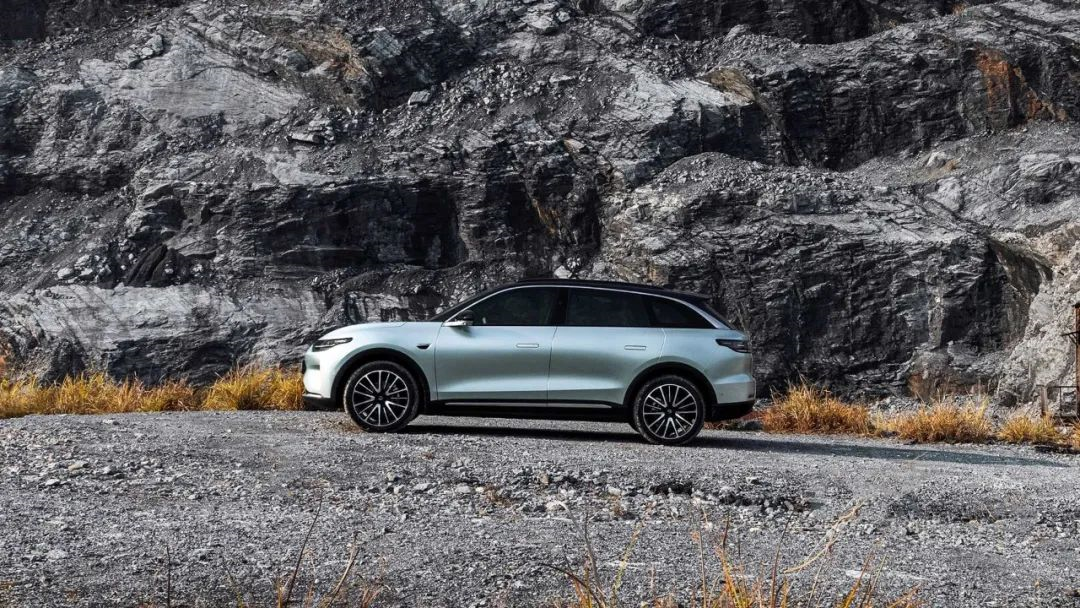Author: Rexiong
The choice of extended range for Leapmotor is also a last resort.
“This is another industrial garbage.”
This was my impression of the first experience of Leapmotor S01 many years ago.
But now, looking back, I was indeed a little too critical at that time, after all, it was impressive to be able to produce the first car of a new brand.
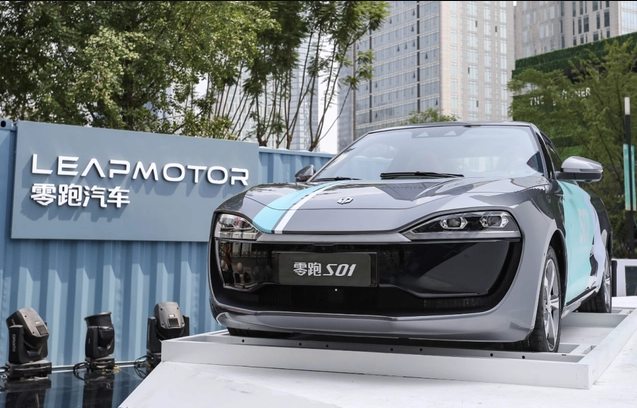
Time flies, and now Leapmotor has risen from “underdog” to “dark horse” with the release of C01 and C11.
Although the total sales of Leapmotor cars in 2021 was only 43,748, which is not impressive compared to the sales of more than 90,000 of WM Motor, the second-tier carmaker, after entering 2022, the new forces in the second-tier carmaking industry, including Leapmotor, have ushered in a strong turnaround. As of October 2022, Leapmotor has surpassed NIO, ranking fourth among the new forces, with a sales volume of 94,600.
According to Leapmotor’s target, it is expected to deliver 120,000 cars in 2022.

However, despite the impressive sales figures, Leapmotor’s performance is as “miserable” as most of its peers.
In November, Leapmotor announced its first quarterly performance report after listing, and it, like many other new automakers, faced the dilemma of selling more at a loss. According to statistics, Leapmotor achieved revenue of 4.288 billion yuan in the third quarter of 2022, a year-on-year increase of 398.5%, and a month-on-month increase of 38.8%; and a net loss of 1.34 billion yuan, a year-on-year increase of 86.11%; the cumulative loss in the first three quarters has exceeded 3.784 billion yuan for the full year of last year.
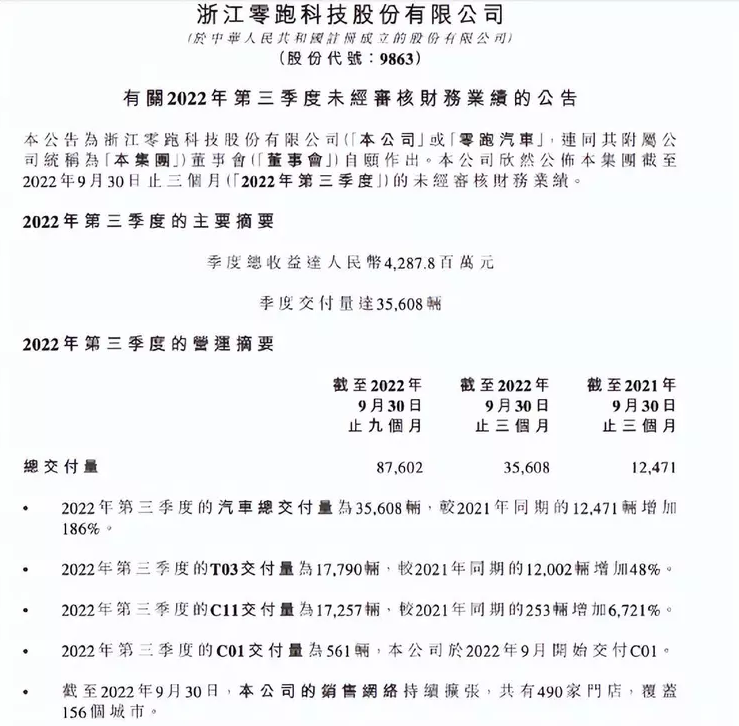
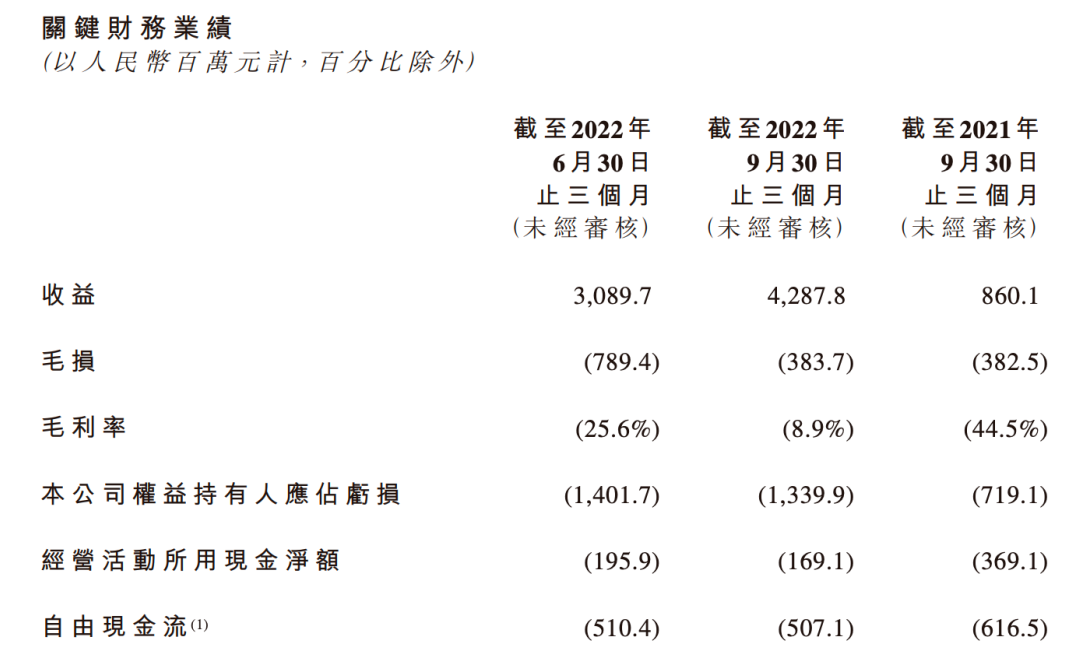 In addition, the gross profit margin of the third quarter was -8.9%, which was significantly improved from last year’s -44.5%, but still remained in a state of loss-making sales, especially compared with the gross profit margin of 10%-20% of Wey and 30% of Tesla. That means, on average, every car sold by LI will lose about RMB 47,000.
In addition, the gross profit margin of the third quarter was -8.9%, which was significantly improved from last year’s -44.5%, but still remained in a state of loss-making sales, especially compared with the gross profit margin of 10%-20% of Wey and 30% of Tesla. That means, on average, every car sold by LI will lose about RMB 47,000.

LI burns money for sales, but this achievement obviously cannot be recognized by the capital market.
The continuous decline of the stock price since the listing is the best attitude of the capital. As of November 22, the Hong Kong stock closed at HKD 19.0, a drop of more than 60% from the issued price of HKD 48 per share.
Originally intended to raise funds through the stock market, the existing continuous expansion of losses, the “halving” of the stock price, and the excessively low gross profit margin undoubtedly add insult to injury. It can be seen that LI may have its foundation shattered if it cannot change its business model in a short period of time. Therefore, it urgently needs new weapons to turn the tide.

For LI, “how to break through self-rescue” has become a more important issue than “surpassing Tesla”; therefore, the company chooses to pick up the banner of range extender hybrid after IDEAL.
LI stated that the future Chinese market for range extender hybrid models will have a significant growth space, and LI will also greatly expand its product line. All upcoming car models will have both pure electric and hybrid versions.
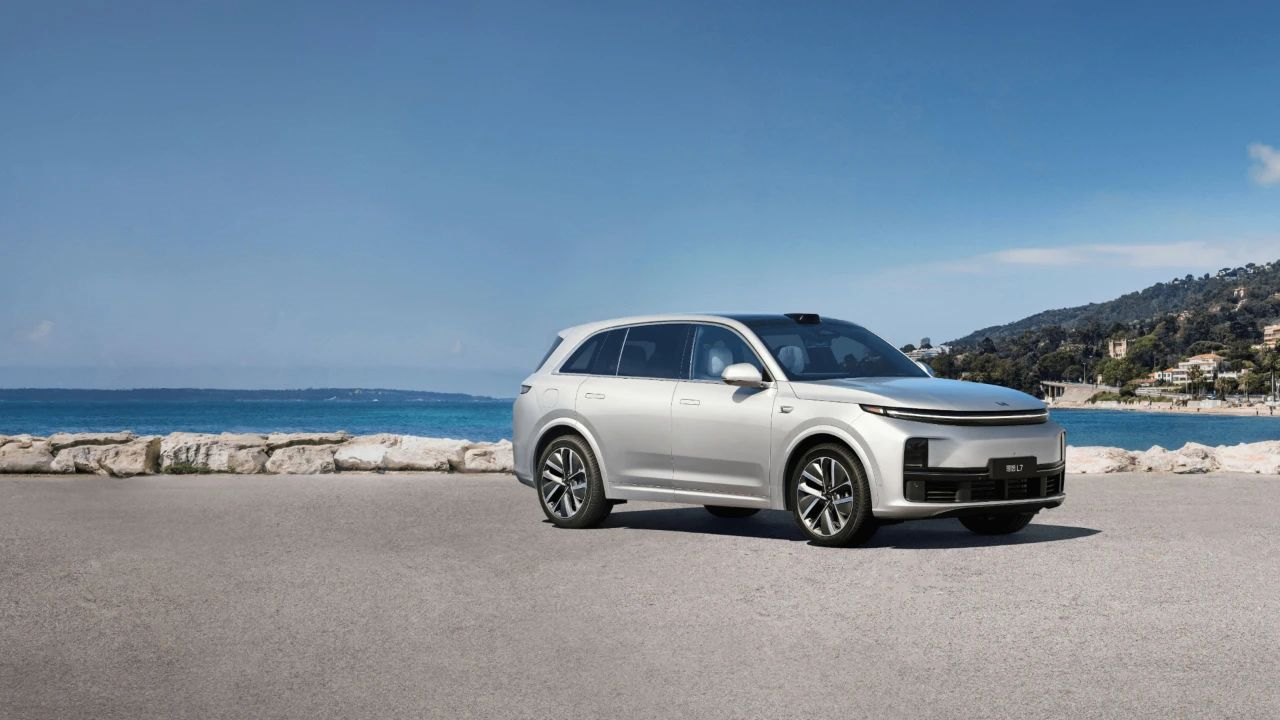
Why choose range extenders? As I mentioned earlier, LI clearly saw IDEAL’s success story. Although range extenders were not invented by IDEAL, it was IDEAL that brought them to the forefront. The fact that LI’s entire lineup of range extender hybrids, L9 and ONE, has achieved sales of over ten thousand units per month and shocking gross profit margins, undoubtedly makes people envy.
The greatest advantage of extended-range hybrid vehicles is that it effectively solves range anxiety, a common issue in pure electric vehicles. This makes it more suitable for enterprises to promote their products. The principle of this type of vehicle is to use a small-displacement engine to generate electricity for the battery while driving is achieved by an electric motor. The engine and electric motor are only in a simple series connection mode. At the same time, extended-range hybrid vehicles reduce manufacturing costs by at least 20% or even more compared to pure electric vehicles.
This relatively simple solution is a win-win plan. It not only has an easy implementation but also facilitates the launch of new products. The cost can be further reduced by using smaller batteries, thereby increasing profits.

However, the use of extended-range hybrid vehicles is usually accompanied by huge controversies, especially regarding the fact that they still burn fuel.
Due to the environmental issues raised by extended-range hybrid vehicles and their backward logic, once they are introduced into new energy vehicles, they are inevitably criticized. However, this technology, which is considered obsolete and redundant by the industry, can meet the needs of consumers and make a profit for automakers. How could it not be popular?

Especially for Leapmotor, who is eager to turn their profit margin positive, the reason why they chose a lower-cost extended-range hybrid technology is very practical. Building cars, researching and developing, and marketing are all big expenses. Of course, they would try to save costs wherever they can. The priority is to turn the profit margin positive and to let investors see the hope of the return.
Moreover, with a cash reserve of 11.779 billion yuan, Leapmotor clearly can’t afford to mess around anymore. Although the choice of extended-range hybrid technology seems more like a reluctant move, compared to the more elusive long-term goals, short-term profits are obviously more important. Leapmotor will seize any opportunities available.
 According to media reports, the range-extender version of the LYNK & CO 03+ has passed the Ministry of Industry and Information Technology’s catalogue application and will be equipped with the same three-cylinder 1.2T range extender engine (maximum power 131PS) as the IDEAL ONE, with a maximum power of 272PS for the electric motor, paired with a ternary lithium battery and a pure electric range of 285km. It is planned to be launched in the fourth quarter with a price expected to be around 160,000 yuan.
According to media reports, the range-extender version of the LYNK & CO 03+ has passed the Ministry of Industry and Information Technology’s catalogue application and will be equipped with the same three-cylinder 1.2T range extender engine (maximum power 131PS) as the IDEAL ONE, with a maximum power of 272PS for the electric motor, paired with a ternary lithium battery and a pure electric range of 285km. It is planned to be launched in the fourth quarter with a price expected to be around 160,000 yuan.
Final words
Nowadays, with the rise of range extension and plug-in hybrid technologies, the diversified features of new energy vehicles are gradually becoming evident. The single pure electric layout seems to have been unable to fully meet the needs, especially in the context of mileage anxiety, charging convenience, and unsolved higher costs. In the face of special scenarios such as long-distance travel and holidays, pure electric vehicles might not be as practical as range extenders or hybrids.
Of course, although many people may think that promoting range-extender technology is a regression of history, in the short term, this is the direction that is most suitable for most markets. Not only can consumers obtain a more practical and economical driving experience, but higher profit margins can also allow automakers to catch their breath in the competition.
As for which driving technology is the real future? And how far can range extension and plug-in hybrid technology go? This answer may be only proven by time.

Returning to the main topic:
Amidst the criticism, zero-run embracing range-extender and hybrid technology might actually be more worthy of our attention, after all, this may be the last trump card.
This article is a translation by ChatGPT of a Chinese report from 42HOW. If you have any questions about it, please email bd@42how.com.
